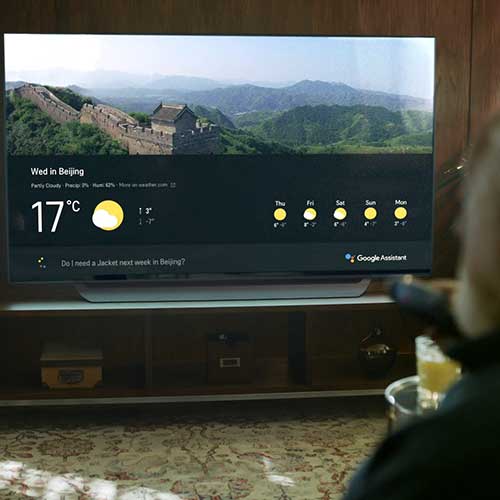Stuart Tickle, managing director of AWE, takes a close look at Artificial Intelligence and its potential to deliver a truly personalised experience for tomorrow’s tech users
So what is AI and why is so much of the latest tech claiming to feature it?
In the broadest sense, Artificial Intelligence is anything man-made that demonstrates some intelligence.
So you could argue that any form of machine that has been programmed to act or react in a particular way, has artificial intelligence. So that’s pretty much everything with some sort of software we already have, then. Nothing scary there.
The next step of AI is machine learning, which, in its most basic form, means rather than just act in a predefined way, it can adapt its behaviour dependent upon differing circumstances. This means it has the capability to adapt its behaviour, dependent on usage. This is why the latest TVs, for example, are claiming to have AI, because they analyse your viewing habits, lighting, content and so on and optimise image settings accordingly.
The benefit being marketed here is that your TV will look great when you first set it up, but will adapt to look even better the more you use it. I am yet to be convinced about this, as what looks best is a personal preference and you have menu settings to optimise during set-up. For example, in some 2017 TVs, switching HDR on had certain negative blooming image issues alongside the enhanced dynamic range benefits, so using it was content-dependent. However, maybe this is what it will ‘learn’ to overcome, and in this example the newer dynamic HDR formats should solve this problem anyway.
What if the smart water meter, smart lock and fridge got together and held you to ransom by blockading your family in the house and refusing you access to food and water until you put £10k of bitcoin into an offshore bank account?
I feel this new wave of publicly-touted AI on home technology is just a first step, though, because the TVs can only adapt within predefined ways as input by humans using software algorithms. Where it will get interesting is when the tech can start finding ways to improve performance beyond what the engineers originally programmed in. This neural learning would be much greater, and perhaps more concerning. It is very complex, but enables machines to more closely mimic the human brain and learn new skills.
I wouldn’t panic, as an individual piece of hardware can only ever operate within its physical spec, so a smart TV with AI can never suddenly turn into the Terminator. However, advanced neural learning in AI products could get interesting. What if the smart water meter, smart lock and fridge got together and held you to ransom by blockading your family in the house and refusing you access to food and water until you put £10k of bitcoin into an offshore bank account?
But with voice control and greater interoperability, do we still need a proprietary control system?

The sales of smart-home speakers show that voice control is already gaining massive momentum and it will be an integral part of device and smart-home control. However, it is best implemented as one of the numerous methods of controlling a truly smart home. All methods have their own merits and weaknesses, and in the same way that it is quicker and easier to control your TV volume/channel with a hard-button remote than it is to open an app, voice control certainly has its place.
Alongside the limitless web-based search enquiries and so on, more complicated or detailed instructions in the smart home may, or will, be best handled by voice, such as ‘show me Bafta award-winning movies’ or ‘play me the Black Lace party album everywhere’. No accounting for taste, though, no matter what the control method.
With URC Total Control 2.0, we can create automated scenes triggered by sensors, voice, remotes, touch-panels, smart devices, location of users using geo-fencing and so on. These can be scheduled, triggered or logic-based processes that do different things at different times of day for different people and so offer a much more personal experience.
This is where real value can be added to consumer products by installing them in a way where all these individual so-called ‘smart’ devices come together into a simple-to-use and intuitive system. DIY and plug ‘n’ play is great, but a professionally installed system remains the only way to currently deliver a truly smart experience.


